Overview of Ascending Somatosensory Pathways
1/20
There's no tags or description
Looks like no tags are added yet.
Name | Mastery | Learn | Test | Matching | Spaced |
|---|
No study sessions yet.
21 Terms
What is the Primary Somatosensory Cortex?
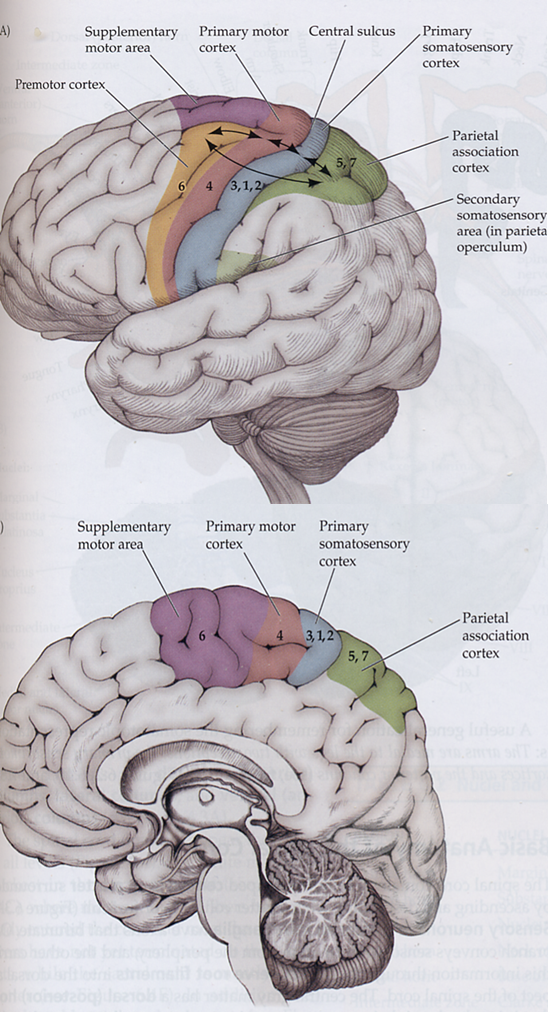
The primary somatosensory cortex is the postcentral gyrus of the parietal lobe
→ responsible for receiving sensory info from the thalamus
→ processing of this information occurs in the secondary somatosensory area and the parietal association cortex
What is the thalamus responsible for?
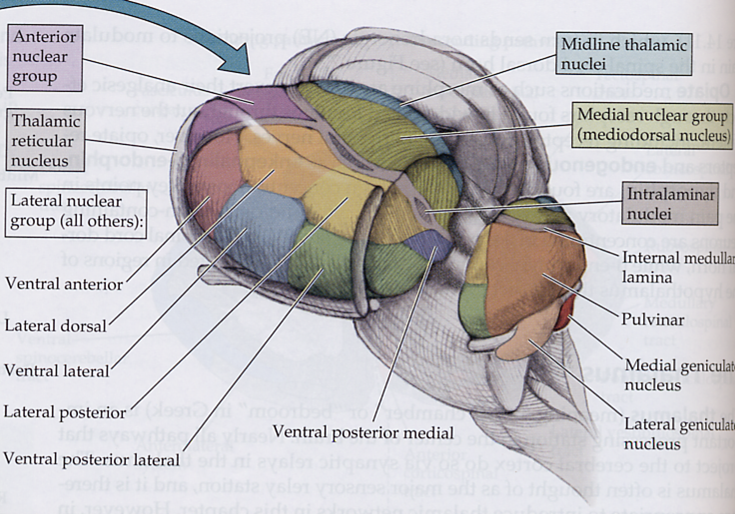
Thalamus is the portion of the diencephalon that acts as the relay center for information to the brain
→ all pathways that project to the cortex relay information through the thalamus
1) Contains several subnuclei that are divided into medial, lateral and anterior tiers
→ these individual subnuclei are used for different relay of different information
What are the ventral posterior lateral and ventral posterior medial
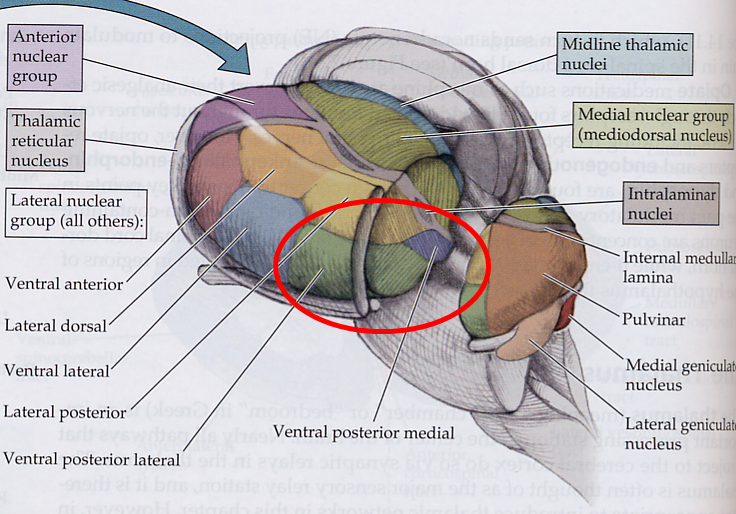
Nuclei of the thalamus
VPL or Ventral Posterior Lateral
→ input from sensory pathways of the body
→ output to the parietal cortex
VPM or Ventral Posterior Medial
→ input from sensory pathways from the head including taste
→ output to the parietal cortex
How do sensory fibers from the thalamus project?
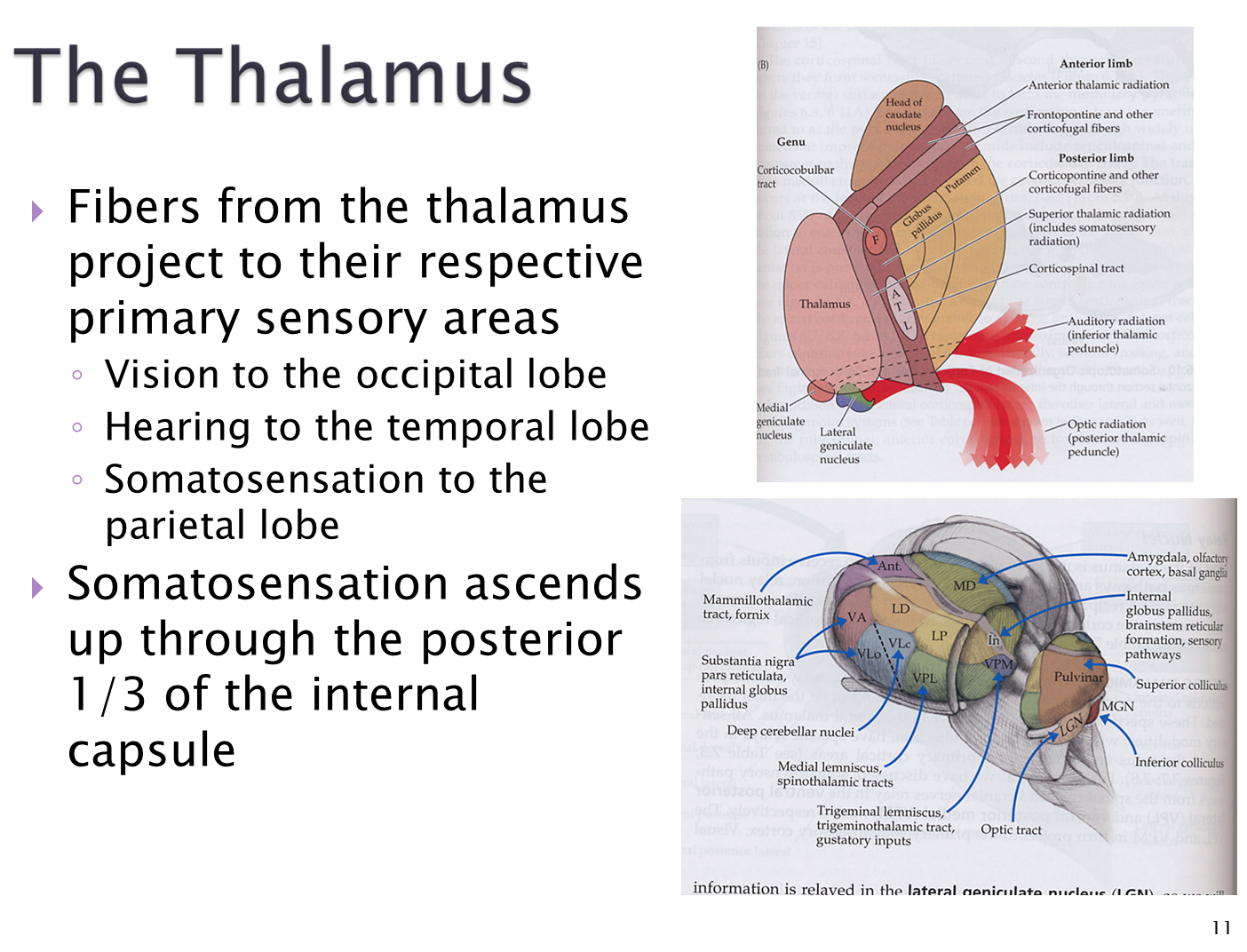
Thalamus will project sensory fibers to their respective sensory areas
→ vision info to the occipital lobe primary vision cortex
→ hearing to the temporal lobe primary auditory cortex
→ somatosensation to the parietal lobe - passing through the posterior 1/3 of the internal capsule to the post central gyrus
For somatosensation, what nerve fibers are responsible for vibration and proprioception? Pain and temperature?

1) A-alpha fibers and A-beta fibers are large and myelinated are are responsible for vibration and proprioception (sense of body in space)
2) A-delta (δ) and C fibers are smaller and unmyelinated and are responsible for pain and temperature
What type of nerves are responsible for bringing sensory info to the spinal cord?

Peripheral nerves are responsible for bringing sensory info to the spinal cord
→ cell bodies of these nerves are located in the dorsal root ganglion
→ pseudounipolar nerves
What are the Anteriolateral Systems?
Anteriolateral systems are ascending sensory pathways of the spinal cord and brainstem. There are three
1) Spinothalamic Tract
→ transits pain and temperature info to the thalamus
2) Spinoreticular Tract
→ conveys info to the reticular formation and intralaminar nuclei of the thalamus
→ behavioral arousal in response to pain - wakes you up or keeps you aroused in response to pain
3) Spinomesencephalic Tract
→ projects to the midbrain periaqueductal gray (PAG)
→ involved in central modulation of pain - modulate whether we feel pain or not
What is the pathway of the spinothalamic tract?
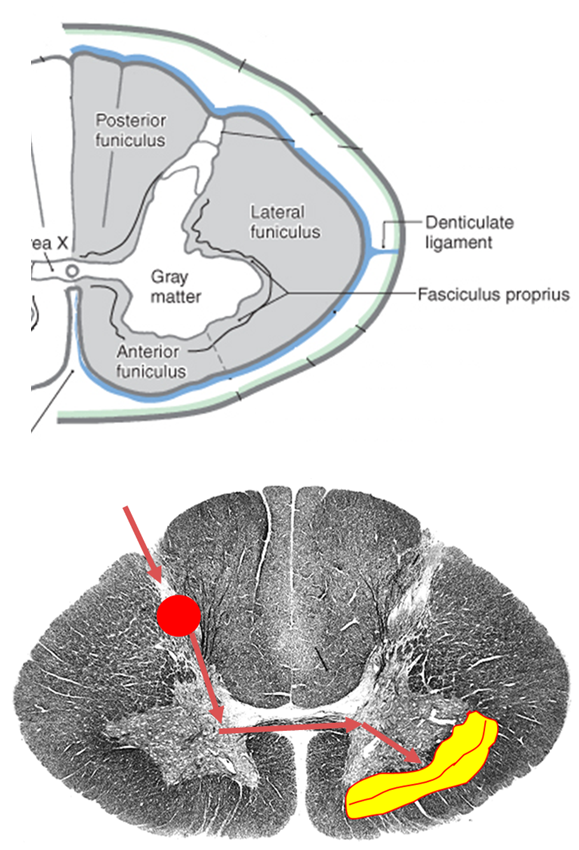
The spinothalamic pathway is a part of the anteriolateral system responsible for transmitting pain and temperature
1) fibers will enter the spinal cord, ascend to the lissauer’s tract, and synapse at the dorsal root ganglion
→ second order fibers will cross in the anterior commissure of the spine
→ fibers will ascend in the ventral white matter with leg fibers running lateral to the arm fibers
2) Second order neurons continue through the anteriolateral part of the spinal cord
→ synapses at the ventroposterior lateral (VPL) nucleus at the thalamus before sending a third neuron to the cortex
What is the trigeminothalamic pathway?
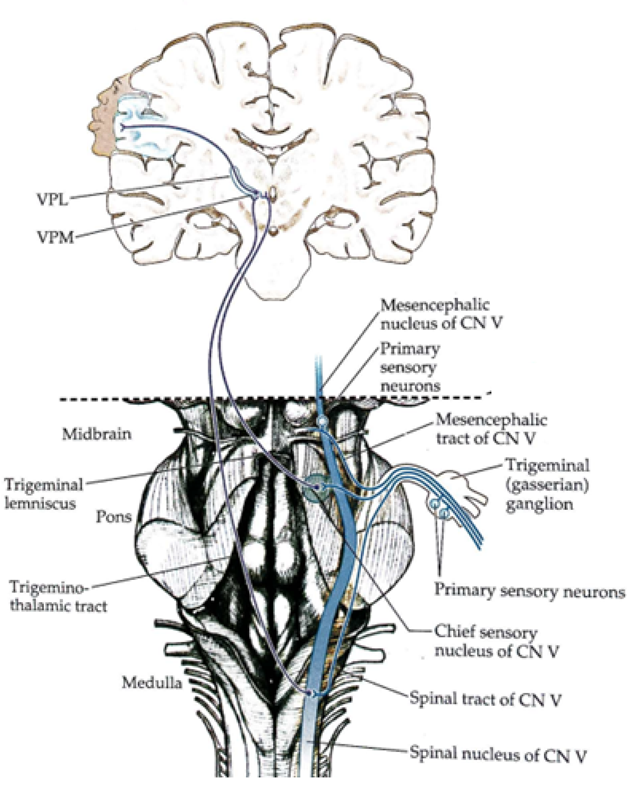
1) The trigeminothalamic pathway conveys sensory information from the face through trigeminal nerve V
2) While somatosensation is directly carried to the chief sensory nucleus, pathways for pain will drop to the spinal nucleus of CN V in the medulla
→ second order neurons that originate from this point will decussate in the brainstem where they will send information to the thalamus via the trigeminothalamic tract
What is the Dorsal Column and Medial Lemniscus?
Dorsal Column in the spinal cord and the Medial Lemniscus of the brainstem
1) these two pathways will carry large diameter myelinated axons that are responsible for somatosensation such as proprioception, vibration and fine touch
What is the pathway for vibration and proprioception to the brain?
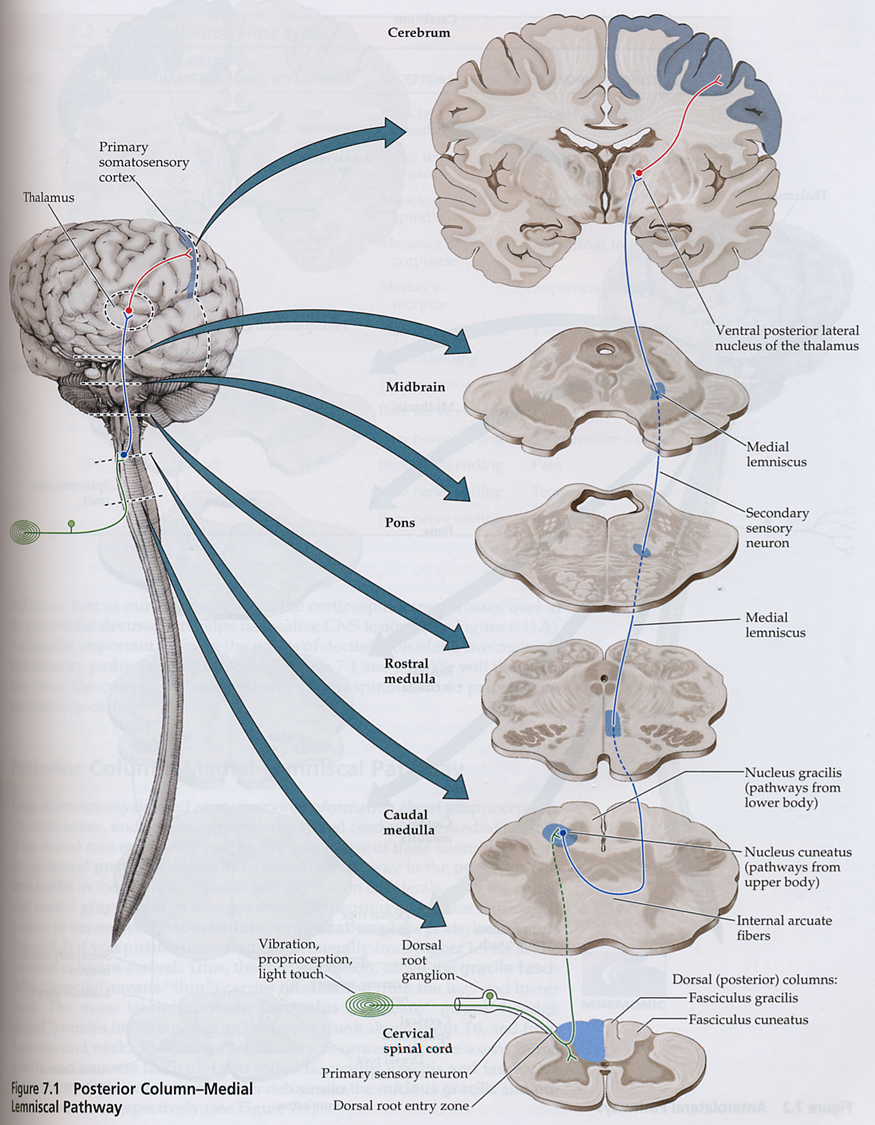
These pathways rely on the dorsal column and medial lemniscus
1) Vibration and proprioception information enters the spinal cord into the dorsal column where they will ascend to the medulla
→ info from the legs goes through the fasciuclus gracilis medially
→ info from the arms goes through the fasciculus cuneatus laterally
2) Second order neurons exit from these areas and then cross in the medulla forming the medial lemniscus
→ fibers travel to the thalamus and synapse in the ventral posterior lateral
→ thalamus projects to the cortex via the posterior limb of the internal capsule
What is the Trigeminal Lemniscus
Trigeminal lemniscus is the nerve tract that originates from the spinal nucleus and chief sensory nucleus of the trigeminal, and is responsible for conveying sensory information of the face to the brain
→ located in the pons, where it will decussate at the midline and ascend and synapse at the ventral posterior medial
What would cause hemisensory loss?
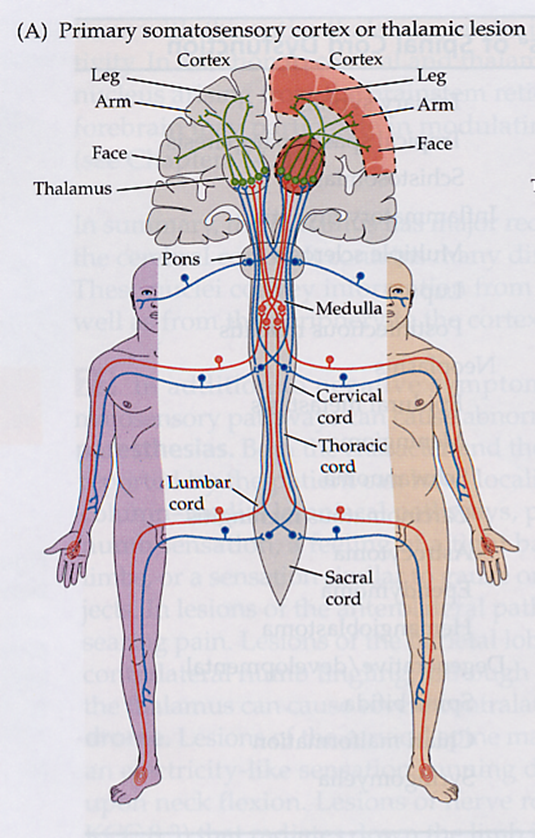
Hemisensory Loss or loss of sensation in an entire half of the body and is caused by cortical lesions
→ things such as strokes can cause motor weakness, visual field cuts, and aphasia
→ lesions of the internal capsule and thalamus may also cause isolated sensory deficits without motor symptoms
What would cause Mixed Face and Body Numbness
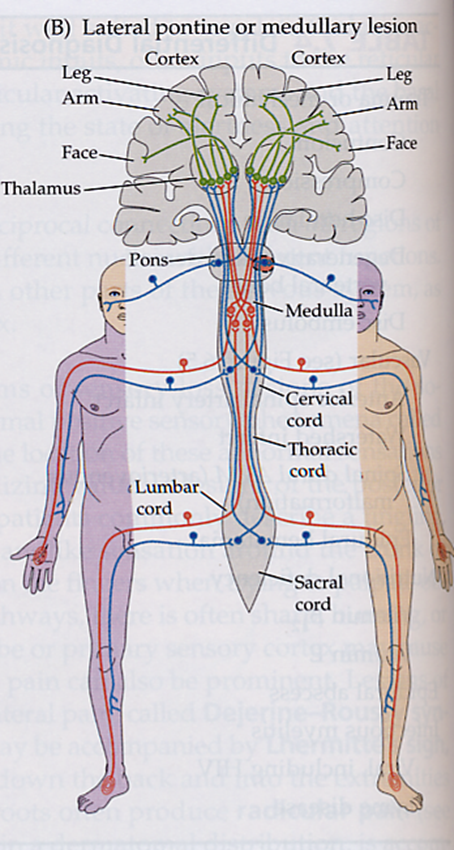
Mixed Face and Body Numbness or weakness of the face and body on contralateral sides is often seen in patients with lateral brainstem lesions
1) These lateral brainstem lesions will affect the anterior pathways and the spinal trigeminal nucleus (facial sensation)
→ contralateral body affected
→ ipsilateral face
How does loss of all sensation in the feet and hands occur?
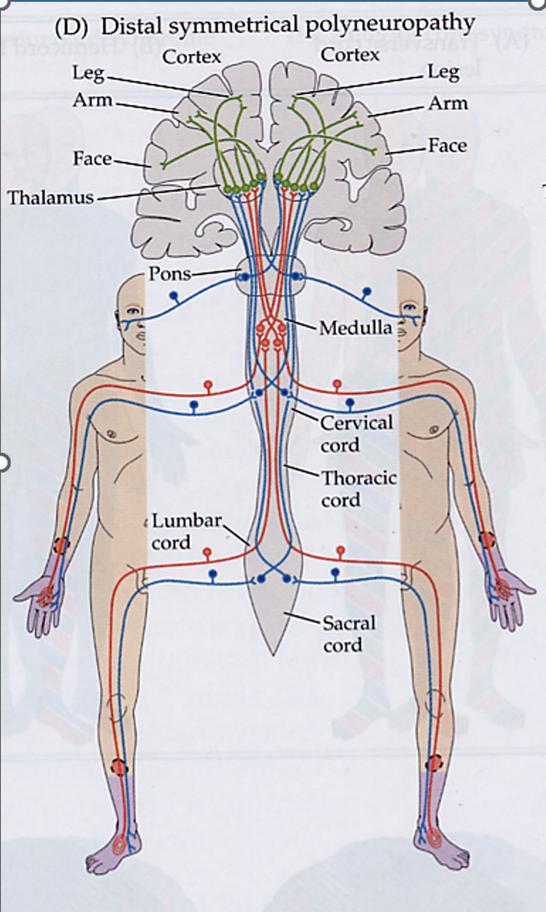
Loss of sensation in the hands and feet is seen in patients with diffuse peripheral nerve injury (neuropathy)
How does numbness in one extremity occur?
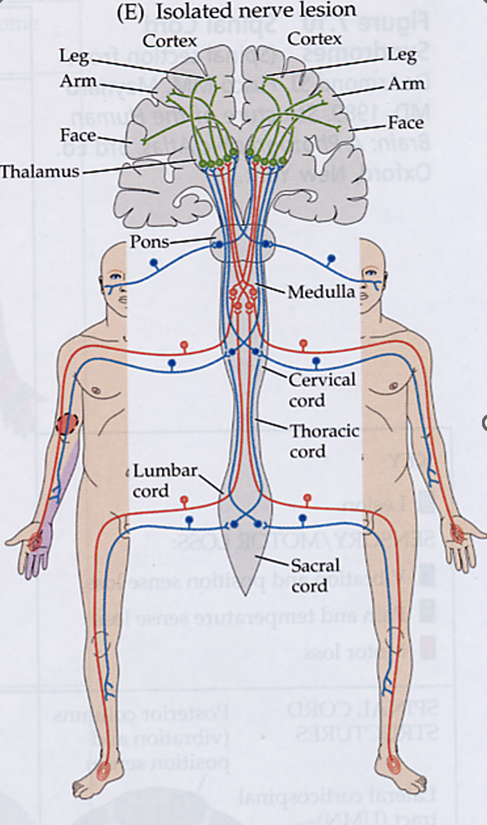
Numbness in a single extremity is typically caused by a peripheral nerve lesion
How do transverse cord injuries occur?
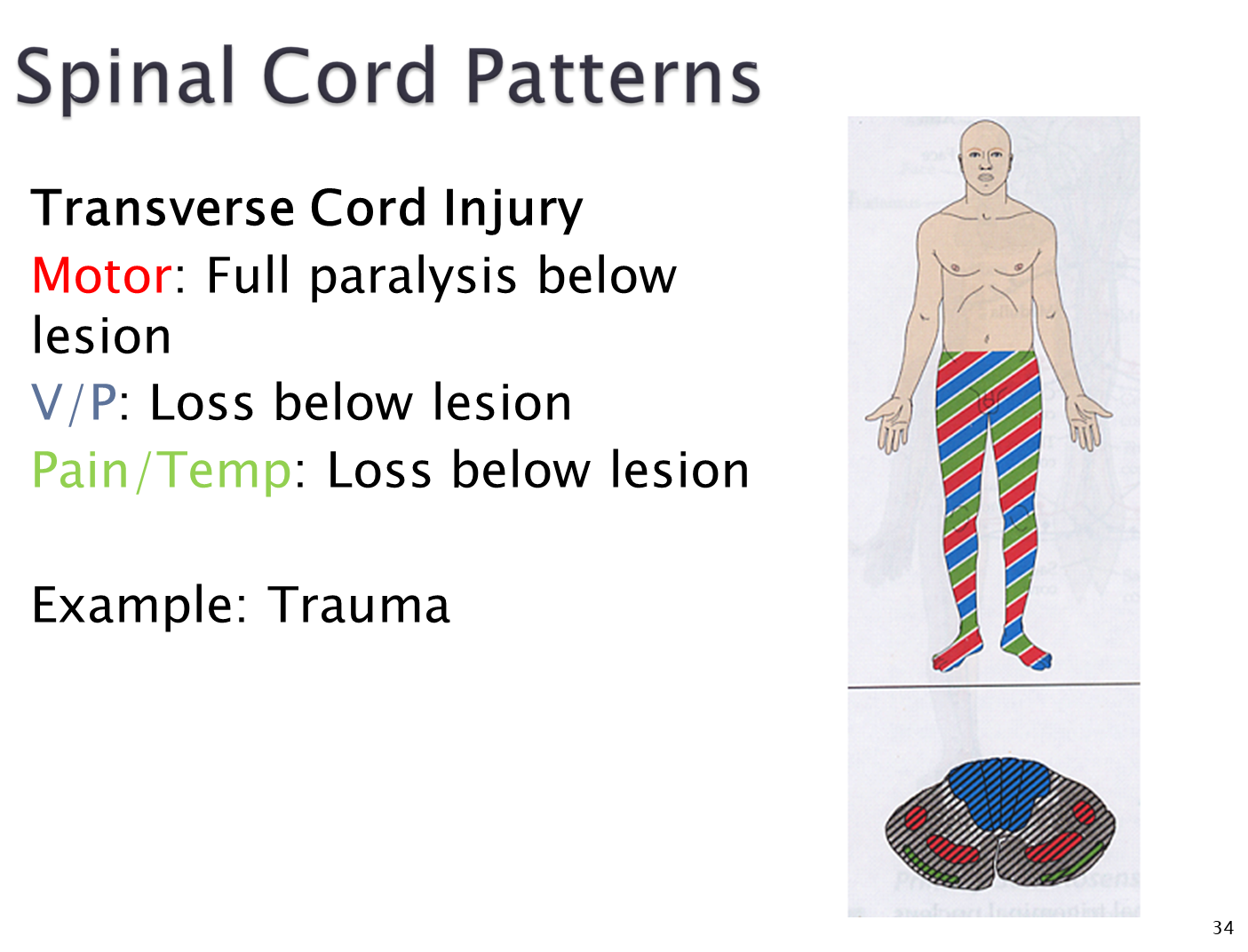
Transverse Cord Injury is a complete lesion of the spinal cord at a given level
→ motor issues: full paralysis below the lesion
→ vibration and proprioception: loss below the lesion
→ pain and temperature: loss below the lesion
What is a Hemicord Syndrome?
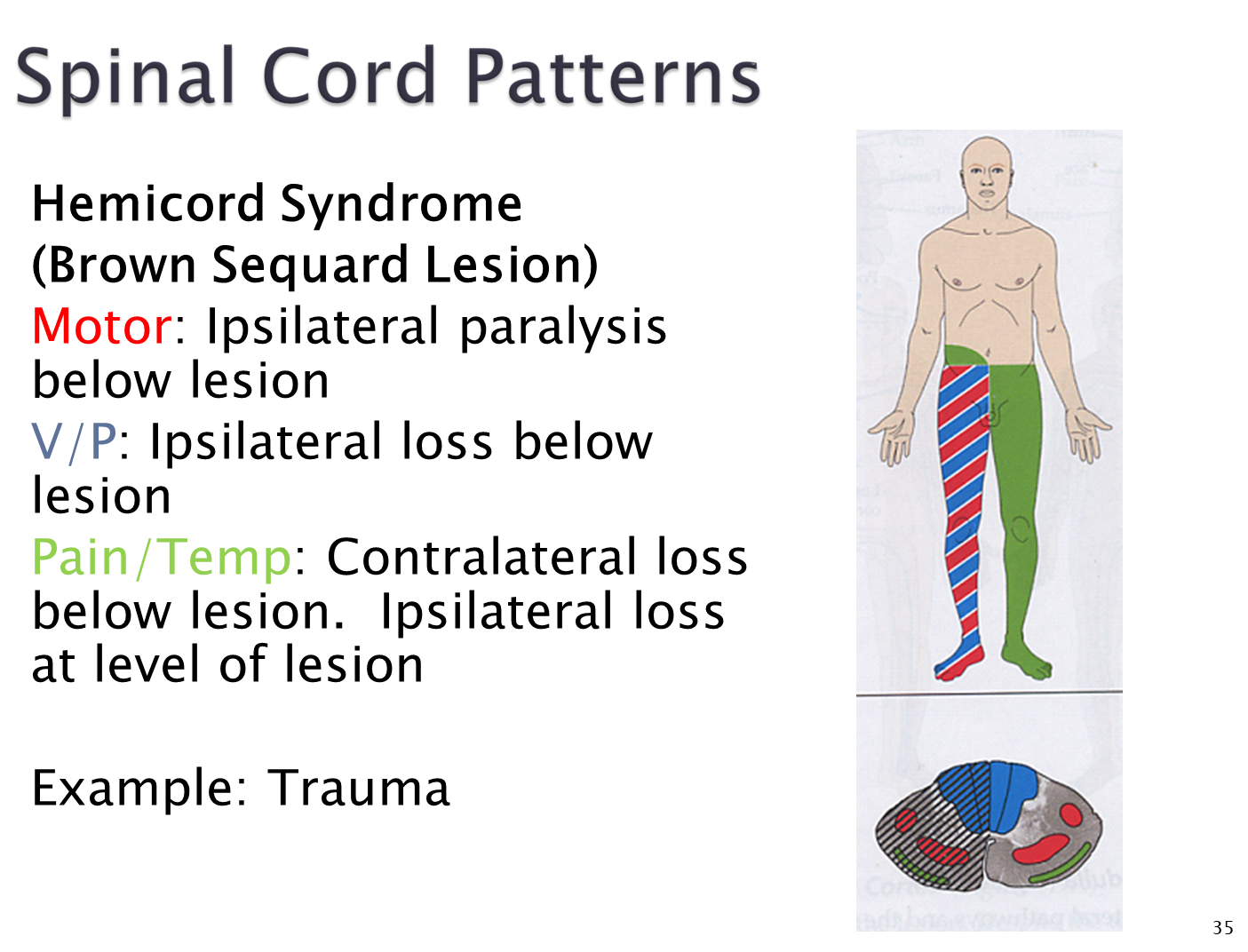
Hemicord Syndrome or a Brown Sequard Lesion occurs when one half of the spinal cord is damaged
→ motor: ipsilateral paralysis below the lesion
→ vibration and proprioception: ipsilateral loss below lesion
→ pain and temp: contralateral loss below lesion with ipsilateral loss at the level of the lesion
What is a Central Cord Lesion?
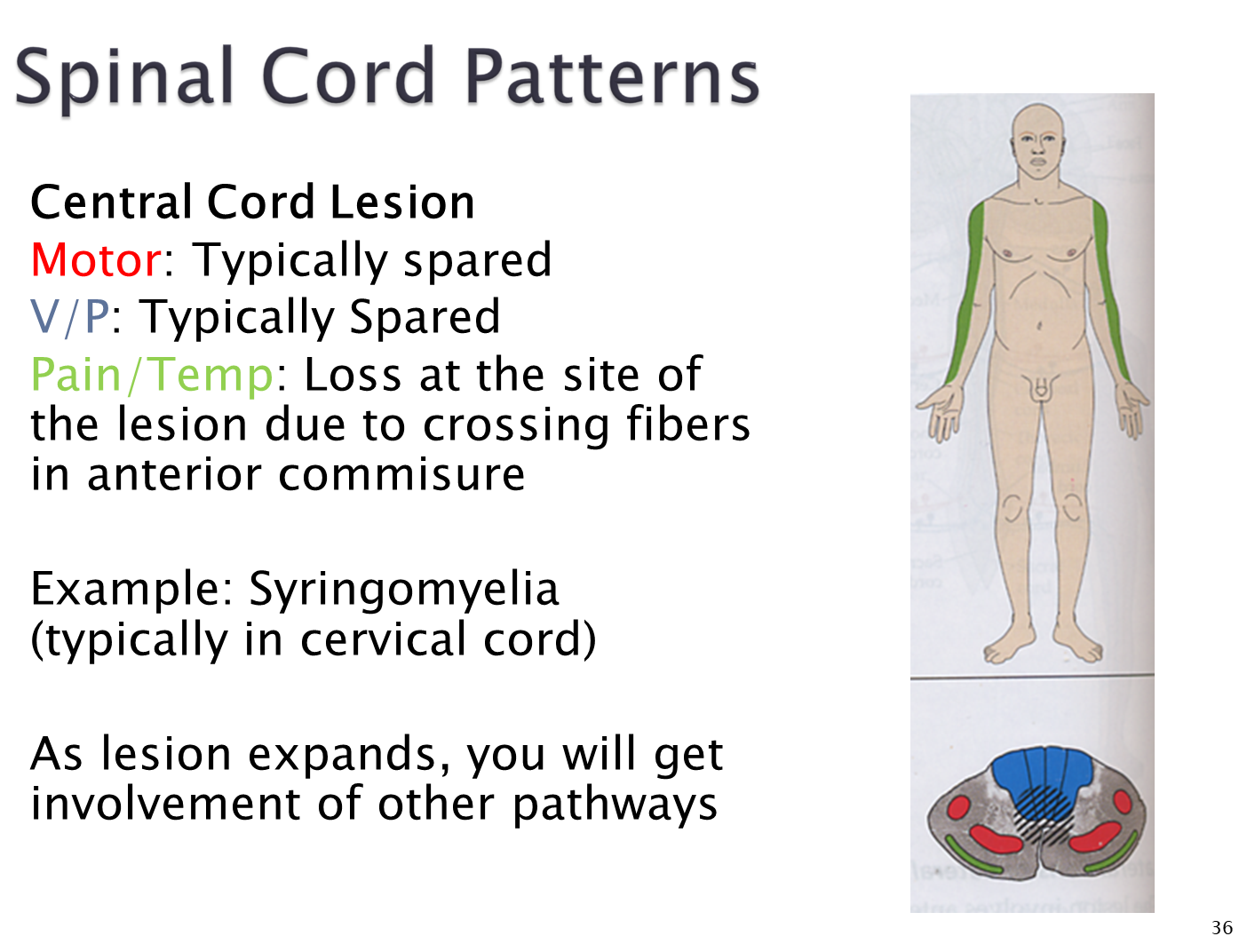
Central Cord Lesions are an incomplete spinal cord injury caused by damage to the central portion of the spinal cord typically in the cervical region
→ Motor - spared
→ Vibration and Proprioception - spared
→ Pain and Temp - lost at the site of the lesion due to crossing fibers in the anterior commisure
What is a Dorsal Column Lesion?
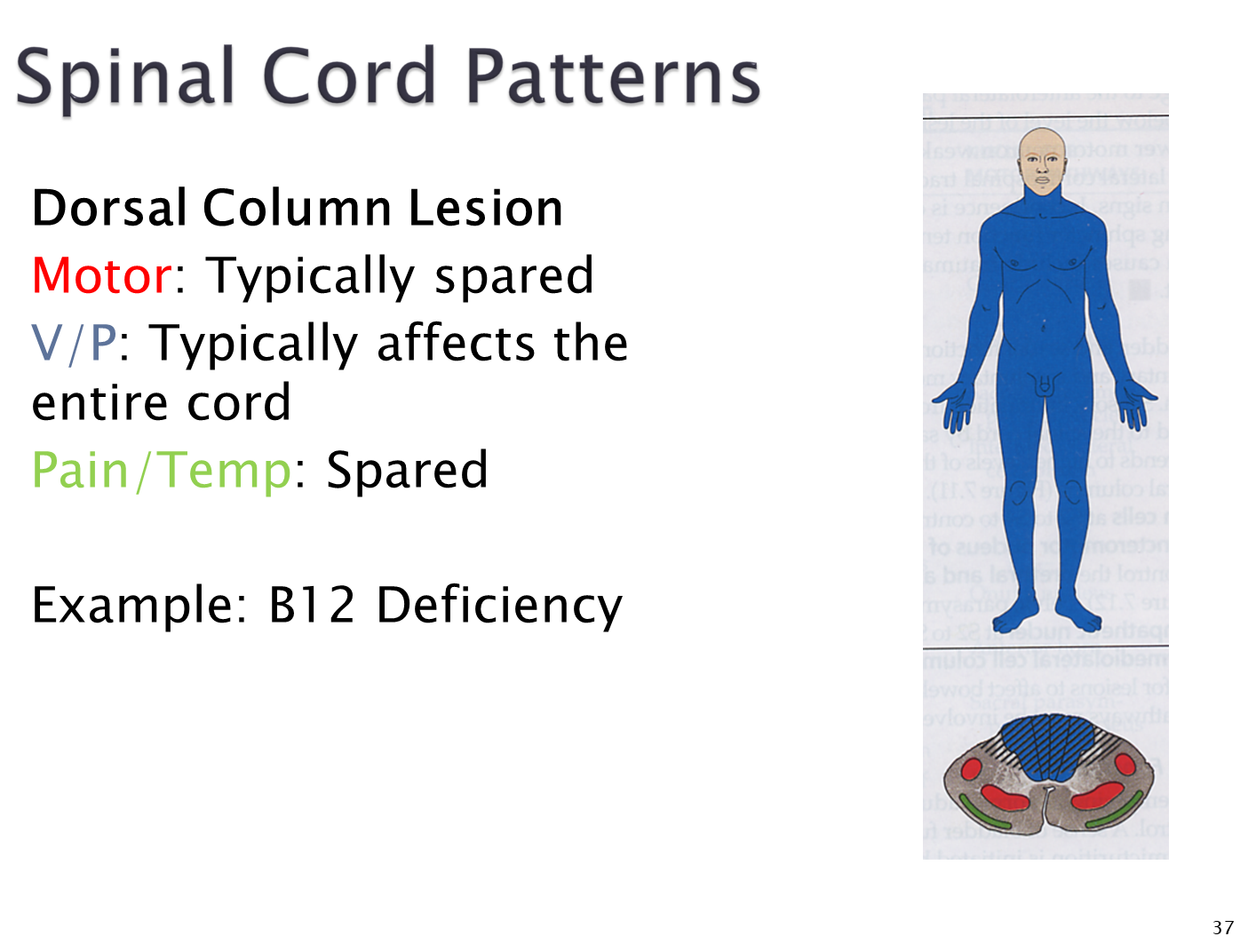
Dorsal Column Lesion is a incomplete spinal cord syndrome that selectively damages the dorsal columns
→ motor and pain and temp are spared
→ vibration and proprioception loss affects the entire body
What is an Anterior Cord Lesion?
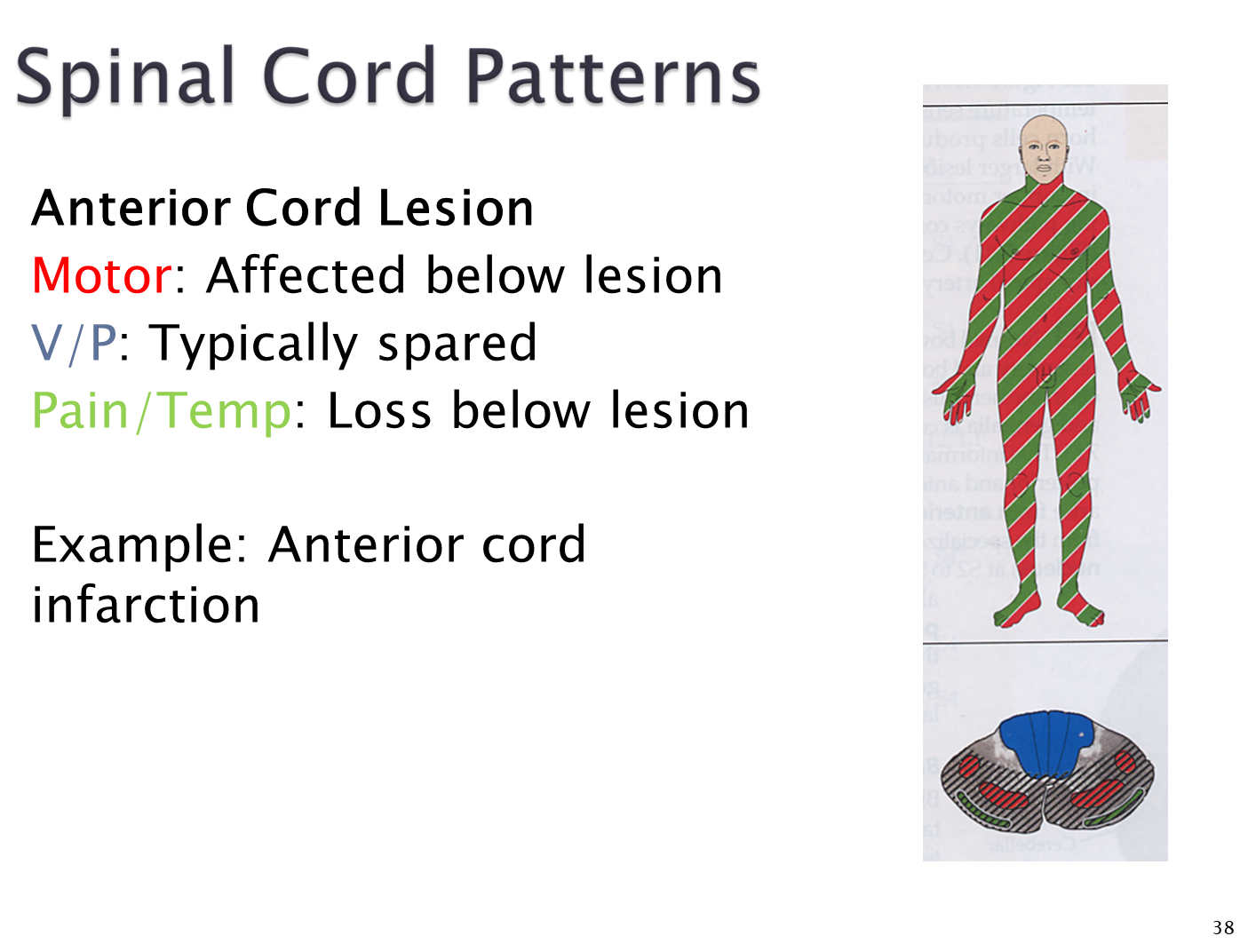
Anterior Lord Lesion is another incomplete spinal cord injury caused by damage to the anterior 2/3 of the spinal cord
→ Motor loss below the site of the lesion
→ vibration and proprioception are spared
→ pain and temp are lost below the lesion